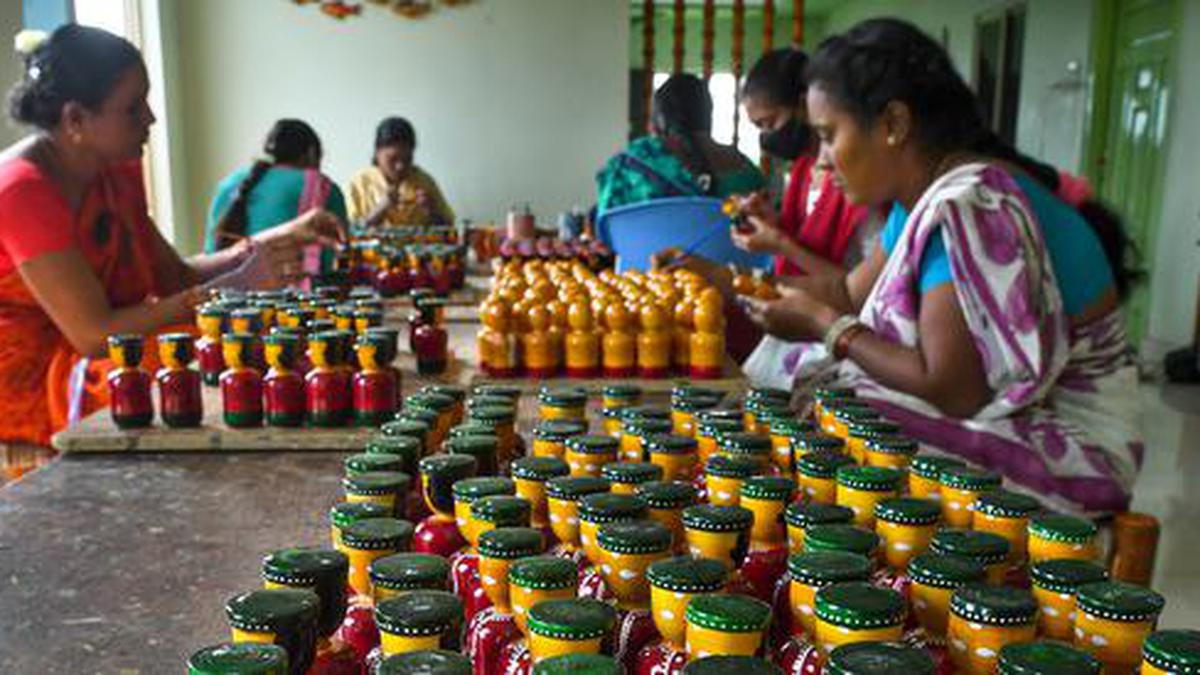
Etikoppaka toys see resurgence, but who will shape the future? Premium
The Hindu
“We are worried about the future of this industry. We are not sure who will take up the profession after us. We are trying to encourage the younger generation to take up this profession,” says Mr.Chinnayachari.PM Modi's "vocal for local" call revives 400-year-old Etikoppaka toy industry in Visakhapatnam, providing livelihood to artisans & women.
In his Mann Ki Baat address on August 30, 2020, Prime Minister Narendra Modi made a mention about ‘Etikoppaka toys’ of Anakapalli district. Calling for India to become a global hub for toy production, with the slogan ‘vocal for local toys’, he hailed the efforts of renowned domestic wooden toymaker C.V. Raju from Etikoppaka for his efforts in reviving the historical art form.
Last January, Mr.Raju received the Padma Shri, the fourth highest civilian award in India, which he termed as an honour for the Etikoppaka toy craft.
But despite the adulation and appreciation, have the fortunes of the Etikoppaka toy industry changed? Has PM Modi’s theme ‘vocal for local’ given Etikoppaka toys a much needed boost?
In Etikoppaka, they say the artisans’ colony never takes a day off. The constant hum of the lathe machine, also known as ‘adda’, echoes through the day. This machine tirelessly shapes and crafts wood into soft, brightly coloured toys using natural dyes derived from seeds, lacquer (lakka), and leaves. Despite festivals or inclement weather, at least one artisan among the 250 households remains at work. The only time the machines stopped working was during the COVID-19 pandemic when the industry was badly hit. That was the time these artisans also started to panic about their livelihood.
“For almost three to four months, all shops were closed. Both online and offline purchase came to a halt. Exports were stopped. There was no support from the government. There was no work for low-wage workers and they had to depend on NGOs for their daily meal,” says K.Venkatesh, an artisan.
The Etikoppaka toy industry is believed to be around 400 years old. D. Sanni Babu, a 60-year-old senior artisan from the village, reminisces about the early days when some craftsmen made small wooden bowls and boxes for household purposes. These versatile items found utility in storing salt, turmeric, and other aromatic substances, with women especially preferring them for keeping ‘kum-kum’ or their precious gold jewellery.
Initially, these wooden creations were sold at stalls near temples and during weekly markets, better known as ‘vaaram - santha’. Over time, local kings, zamindars, and landlords began placing orders for these wooden products, utilising them both in kitchens and as decorative elements in homes. The turning point in their history came when artisans ventured into crafting toys for children.











